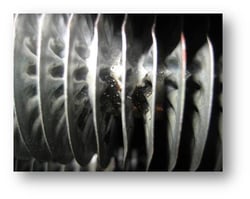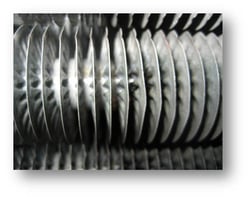On Friday, February 26, Jim Newman was interviewed by Joe Hughes and Cliff "Z-Man" Zlotnick of IAQRadio.com. They asked Jim to join them on air and share more detail from his Keynote presentation at this year's Indoor Air Quality Association (IAQA) Annual Meeting, held in Orlando, FL, in conjunction with the ASHRAE Convention. After the interview, Z-Man published the following blog.
Dean of Green
Jim Newman, Owner and Managing Partner of Michigan-based Newman Consulting Group, LLC, is an author and ASHRAE Distinguished Lecturer who gives seminars internationally on many topics related to the construction industry including: energy conservation, IAQ, sustainability and green buildings, and proper operation and maintenance techniques.
Nuggets mined from today’s episode:
Jim has a mechanical engineering degree from Tufts University. Prior to consulting, he worked for Westinghouse, was A/C Product Manager for a Michigan based manufacturer of large HVAC systems, and was co-founder of the largest HVAC manufacturer’s rep firm in SE Michigan.
Jim first became acquainted with IAQ as a 10-year-old kid with allergies.
A pioneer, he was lecturing about IAQ prior to the 1991 release of the EPA’s Building Air Quality Guide: A Guide for Building Owners and Facility Managers, which has since morphed into IBEAM.
Efforts to improve IAQ can be traced back to 18th century buildings with a propeller on the roof that provided cross ventilation. IAQ became an issue in the US after the 1973 Arab Oil Embargo. Tighter buildings and lower volumes of outside air for energy efficiency purposes resulted in “Sick Building Syndrome” and other building related illness.
Findings from a NIOSH study of building problems found: 50% of problems were attributed to HVAC systems, 28% to indoor contaminates, 11% to outside contaminates, and 11% unknown. IAQ issues are not always easy to determine in commercial buildings.
“Green goes to gray” as efficient, new HVAC systems become soiled and less efficient. Systems begin to deteriorate as soon as they begin running.
There are three types of equipment maintenance. From most costly and disruptive to least costly:
- Reactive [if it ain’t broke don’t fix it]
- Preventive [fix if something doesn’t look or sound right]
- Predictive [follow manufacturer’s recommendations]
Operating manuals for new HVAC systems often go unread and are filed away. The controls on some high-tech HVAC systems are too sophisticated for some building operators and often result in default to manual operation, frequently after a relatively short period of time.
Jim opines that new and retro-fitted HVAC systems should be commissioned by a 3rd party. Enhanced commissioning is even better; occurring several months later where a 3rd party rechecks systems and retrains system operators. Software algorithms are available that prompt system maintenance.
 Biofilm is an aggregate of bacterial cells that grow and adhere to surfaces. [Extracellular polymeric substances (EPS) are high-molecular weight compounds secreted by microorganisms into their environment. EPS establish the functional and structural integrity of biofilms, and are considered the fundamental component that determines the physiochemical properties of a biofilm.] Biofilm is resistant to cleaning and antimicrobial action.
Biofilm is an aggregate of bacterial cells that grow and adhere to surfaces. [Extracellular polymeric substances (EPS) are high-molecular weight compounds secreted by microorganisms into their environment. EPS establish the functional and structural integrity of biofilms, and are considered the fundamental component that determines the physiochemical properties of a biofilm.] Biofilm is resistant to cleaning and antimicrobial action.
Biofilm is commonly found on cooling coils. Access to cooling coils is a common problem in residential installations. In commercial settings, improper coil cleaning pushes soil deeper into the coil. Jim advocates the careful use of high-pressure steam cleaning combined with chemical biofilm removal.
(Top Left: Close-up of coil after conventional cleaning. Black tar like substance is biofilm. Dirty coils increase energy use and cause IAQ problems. Bottom Right: Close-up of coil after cleaning with engineered EFM - after conventional cleaning.)

Cleaning efficiency of HVAC system components can be quantified by measuring: airflow, static pressure, and dry and wet bulb temperature differentials before and after cleaning. 1.5%-3% energy savings per each degree of temperature difference simply due to change in heat transfer coefficient of the coil.
He opined that ASHRAE Ventilation Standards 62.1 & 62.2 are minimum standards “acceptable to human occupants and that minimize adverse health effects.” ASHRAE Standard 62.1 for Commercial Buildings now considers both building occupancy and square footage rather than just building occupancy.
According to ASHRAE, 75% of ducts leak at a rate of 10%-25%. This results in a comfort and energy loss of 25%-40%. When ducts leak: equipment works harder, occupants are less comfortable, energy costs are higher and IAQ can be negatively affected. The Aeroseal system, which seals ductwork from the inside out, was developed by Lawrence Berkeley Lab and the DOE.
Some IEQ stressors in addition to IAQ: lighting, glare, noise (too much or too little), vibration, ergonomic (chair and desk comfort) and psychosocial (social harmony), etc.
Jim recommends a defensive strategy risk management approach to potential complaints and problems: avoid offensive building materials and cleaning and maintenance products, commission HVAC systems prior to occupancy and re-commission them after occupancy on a regular basis, document everything, respond immediately, take corrective action ASAP, become aware by walking the building and ensuring occupants are comfortable.
Seek professional assistance when you can’t ID the problem and/or it isn’t obvious.
IAQ problems can result in legal implications. When he spoke about IAQ at a facility convention in 1990, there had been no jury trials in IAQ cases; by mid 1990s there were jury trials over IAQ. When litigation occurs everybody gets blamed. Even the EPA isn’t immune to IAQ complaints and litigation.
Green buildings are becoming more affordable because more low VOC or no VOC building materials are available at considerably lower cost than 10 years ago. Green buildings come with higher all around expectations. These expectations sometimes cause issues.
Things to think about:
- occupants grow accustomed to old buildings
- do you want to be the first user of a new technology, new filtration or HVAC systems with big claims without adequate testing
- will a bike rack actually be used
- have occupants been involved before a major retrofit occurs
- is a building management system being mined for good operational data
- if there is an IAQ issue, either real or only perceived, do you respond immediately
Jim’s last word – After construction, proper operation and good on-going maintenance are the keys to having a sustainable building.
To contact Jim – contact@newmanconsultinggroup.us
Today’s music: “It’s not easy being green” by Ray Charles YouTube
Z-Man signing off
Trivia: What is the most energy efficient appliance in the kitchen?
Answer: Microwave.
Reposted with permission. To hear the full interview, click below.



